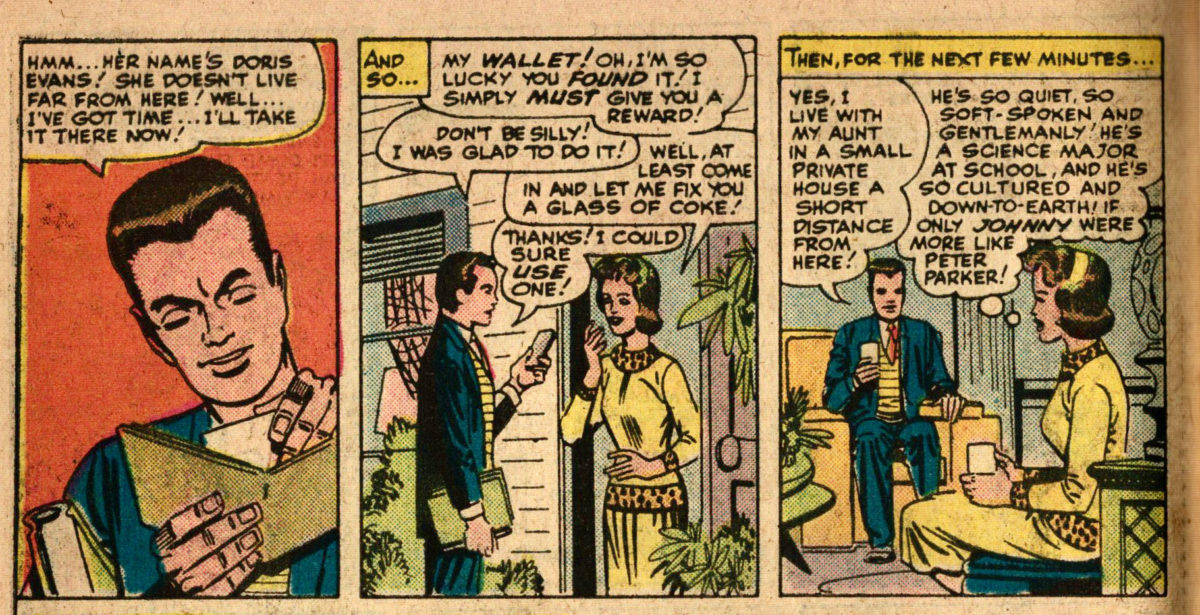The Threat of the Torrid Twosome
Featuring: Human Torch
Release: December 10, 1962
Cover: March 1963
12 cents
Plot: Stan Lee
Script: Larry Lieber
Art: Dick Ayers
13 pages

I read this story in Marvel Masterworks: The Human Torch vol. 1
This blog took a short hiatus while I traveled a bit. I did bring my Human Torch book along with me with the idea of getting this written while abroad, but I didn’t get it done. It doesn’t help that we’ve now read Amazing Spider-Man, so know how good a superhero comic can be. That doesn’t make it easy to return to these Human Torch comics.
This is the first Human Torch story not drawn by Kirby. Regular inker Dick Ayers is stepping up as the main artist. That’s a common theme for the month. After 18 months of Kirby drawing all the titles we’ve been reading, he’s dialing it back. We just saw Don Heck on Ant-Man and Iron Man.
This story finally addresses–albeit clumsily–the nagging flaw at the heart of this series: the secret identity of the Human Torch. We learn that he does not in fact have a secret identity, and that all his friends were pretending to not know his identity to be nice. That doesn’t explain a lot of things, like why the Torch so frequently risked lives to protect his identity, why he was so open and cavalier about his identity in the Fantastic Four comics, or why the Wizard’s plan depended so heavily on the Human Torch guarding his identity.
Continue reading “Strange Tales #106”


























